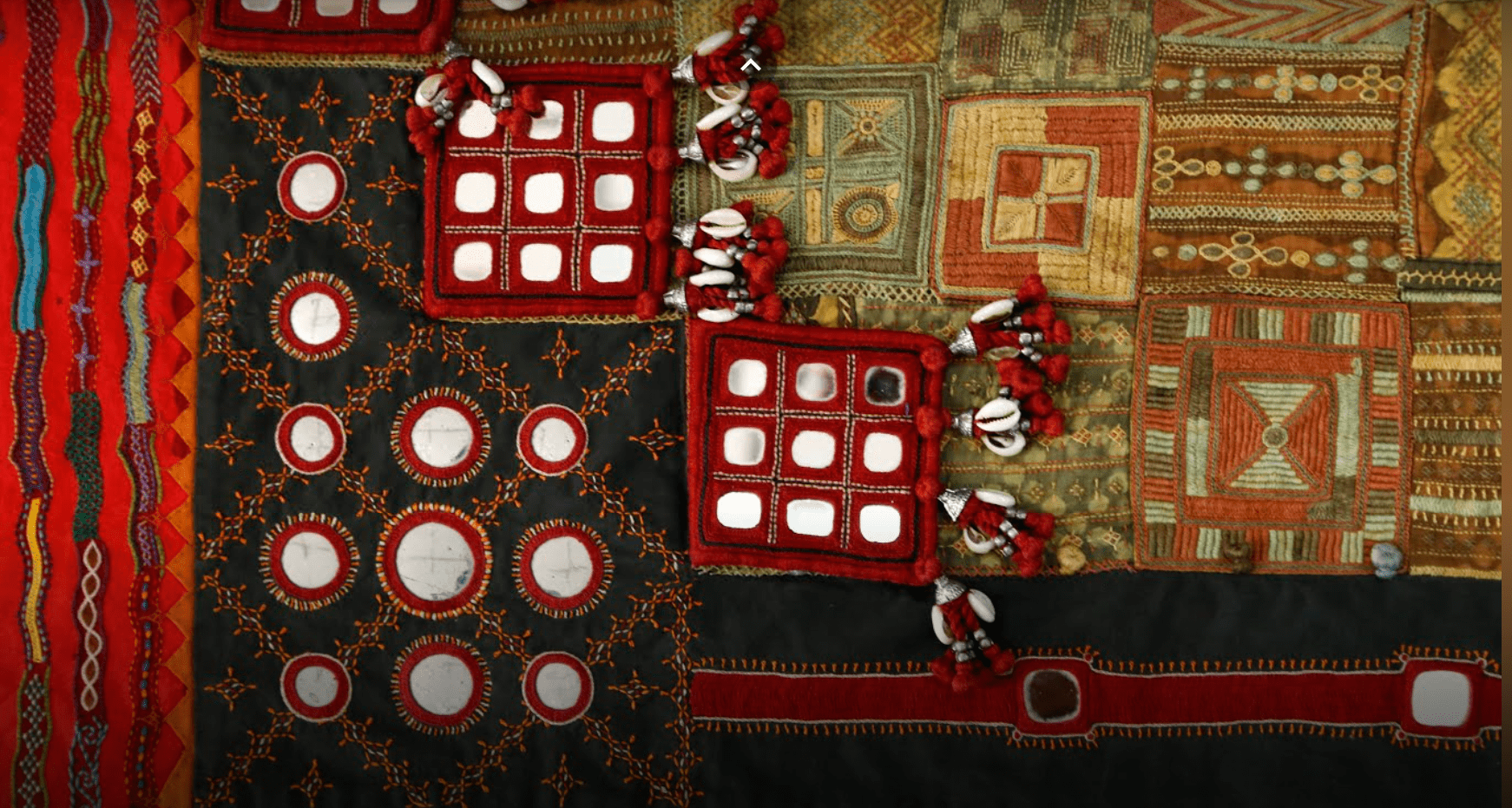India’s G-20 Presidency recently achieved a remarkable feet by setting a new Guinness World record. The record-breaking involved the largest display of Lambani items, showcasing the rich heritage of India.
What in News?
- AS per the 3rd G20 culture working group (CWG) meeting held at Hampi, Karnataka, a Guinness World record was created for the largest display of ‘Lambani Art.’
- This culture working group meeting was titled with ‘Threads of Unity.’
- Total 1755 items were on display in 3rd G20 culture working group.
- It is an effort to popularize Lambani Art, craft and culture.
- This step also expected to encourage the participation of Nari Shakti in such cultural activities.
Lambani Art:
- Lambani art is an intricate embroidery art done on a piece of cloth.
- Lambani art is also known as Banjara embroidery.
- Lambani Art is mainly practiced by the community of Lambanis..
- It is characterised by colourful threads, mirror work, and a rich array of stick patterns.
- Lambani craft traditions involves skilfully stitching together small pieces of discarded fabric to create a beautiful fabric.
- The rich embroidery of Lambani community, serves as a vital source of livelihood and sustenance.
- Sandur Lambani Embroidery is recognised with a Geographical Indication tag in 2010.
Process involved in Lambani Art:
Lambani art comprises various processes such as:
- Firstly basic tools and materials are collected like thread, needle, fabric and accessories.
- Then the selection of patterns, types, shapes of stitches and colour combinations.
- Accessories like beads and mirrors are added in the later stage.
- Finally it is ironed to give the cloth piece a desired look.
Features of Lambani Art:
- Lambani art is done on loosely woven piece of cloth.
- It includes-
- Around 14 types of stitches with various geometric shapes like square, triangle, diagonal lines etc.
- Parallel lines of multi color threads
- Patch work
- Mirror work
- Quilting
- Applique, an ornamental needle work.
- Overlaying
- Most commonly used colours in this embroidery are red, yellow and blue.
Importance of Lambani Art:
- Empower the lambani community.
- Contribute to the economy of the country.
- Preserve the rich cultural traditions in line with the constitutional provisions.
- Lamabani art contribute to the improvement of biodiversity of their region.
- It is considered to be as sustainable practice which works on the principle of recycle and reuse.
- It has the potential to enhance India’s soft power.
About the Lambani Community:
- Lambani community is also known by the name of Banjara Community.
- The word ‘banjara’ is derived from the ‘Vanaj’ meaning to trade and ‘Jara’ meaning to trade.
- Lambani’s are commercial nomads.
- Banjaras are known by different names in different states:
- Lambada or Lambadi in Andhra Pradesh.
- Lambani in Karnataka.
- Banjara in Rajasthan.
- Gwar or Gwariya in Rajasthan.
- The language of Banjaras is ‘Gorboli’ or ‘Gor mati boli’ or ‘Brinjari.’
Efforts for Conservation of Lambani Art:
- Exhibitions should be organised to make people interested in this art.
- The artisans should provide with financial support.
- There should be a formal course to learn about this art.
- GI tag will help in creating a unique selling proposition.
- More awareness about indigenous textiles and fashion will help in boosting the market of lambani art.
- More promotion and brand engagement would help to revive this art.
Find More Miscellaneous News Here




 Which Indian City is Known as the Footwe...
Which Indian City is Known as the Footwe...
 Which Desert is known as the Cold Desert...
Which Desert is known as the Cold Desert...
 Top-10 News Media Companies in the World...
Top-10 News Media Companies in the World...







